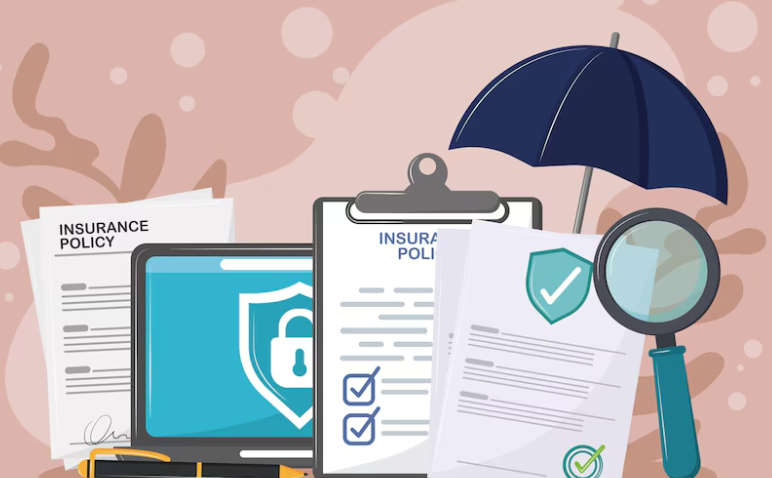Introduction
Insurance can be a complex and sometimes confusing topic, especially when you’re trying to navigate the language used in policies. Understanding key terms and concepts is essential to ensuring you get the right coverage and make the most out of your policy. Whether you’re new to insurance or just want to gain a clearer understanding, this guide will help you decipher the most common terms and concepts found in insurance policies.
1. Premium
What It Is:
A premium is the amount you pay for your insurance policy. Premiums can be paid on a monthly, quarterly, or annual basis, depending on the terms of your policy.
Why It’s Important:
Your premium is the cost of maintaining your insurance coverage. Generally, higher coverage limits or additional coverage options result in higher premiums. It’s important to balance your premium with your budget and the level of protection you need.
2. Deductible
What It Is:
A deductible is the amount of money you must pay out-of-pocket before your insurance policy begins to pay for covered expenses. For example, if you have a $500 deductible and you make a claim for $2,000 in damages, you would pay the first $500, and your insurer would pay the remaining $1,500.
Why It’s Important:
Choosing a higher deductible typically results in lower premiums. However, you’ll need to be prepared to cover the deductible amount in the event of a claim. A lower deductible means higher premiums but can provide more immediate financial protection.
3. Coverage Limits
What It Is:
Coverage limits are the maximum amount your insurer will pay for a claim under a particular type of coverage. For example, if you have auto insurance with a $100,000 liability limit and you’re found at fault for an accident, your insurer will only pay up to $100,000 for damages, even if the actual damages exceed that amount.
Why It’s Important:
Understanding your coverage limits is crucial because if you reach the limit, you will be responsible for paying any remaining costs. Ensure that your limits are sufficient for your needs based on the value of your assets and the potential risks you face.
4. Exclusions
What It Is:
Exclusions are specific situations or events that are not covered by your insurance policy. For example, many homeowners’ insurance policies exclude damage from floods or earthquakes, requiring separate policies for these types of risks.
Why It’s Important:
Exclusions can leave you unprotected in certain situations, so it’s essential to review them closely. If certain exclusions are a concern, consider adding endorsements or purchasing additional coverage to fill these gaps.
5. Policyholder
What It Is:
The policyholder is the person who owns the insurance policy and is responsible for paying premiums. This is the individual or entity that the insurance company will contact for claims and policy changes.
Why It’s Important:
As the policyholder, you have the ability to modify, cancel, or update your policy, including making changes to the coverage, beneficiaries, or other details.
6. Beneficiary
What It Is:
A beneficiary is a person or entity designated to receive benefits from an insurance policy, typically in the event of the policyholder’s death. For example, life insurance policies typically have beneficiaries named to receive the death benefit.
Why It’s Important:
Make sure your beneficiary designations are up to date. Life changes like marriage, divorce, or the birth of a child may require you to update your beneficiaries to ensure that your assets are passed on according to your wishes.
7. Underwriting
What It Is:
Underwriting is the process by which an insurance company evaluates the risks of insuring you. This involves assessing your health, driving record, lifestyle, and other factors to determine your premium, coverage options, and eligibility for certain policies.
Why It’s Important:
Your underwriting results can significantly affect the cost of your premiums and the type of coverage you’re eligible for. It’s important to answer questions truthfully during this process to avoid issues with claims later on.
8. Riders or Endorsements
What It Is:
Riders, also known as endorsements, are add-ons or modifications to a standard insurance policy that provide additional coverage or adjust existing terms. For example, a homeowner might add a rider for high-value items like jewelry or artwork.
Why It’s Important:
Riders can help tailor your policy to fit specific needs. If you have assets or risks that aren’t covered under a basic policy, riders can ensure you’re properly protected.
9. Claims Process
What It Is:
The claims process is the procedure you follow to request payment or reimbursement from your insurance company after an incident. This typically involves filing a claim, providing necessary documentation, and waiting for the insurance company to assess the situation and approve or deny the claim.
Why It’s Important:
Knowing how to file a claim and what documentation is required can speed up the process and ensure that you’re reimbursed for covered losses. Always document incidents thoroughly and follow your insurance provider’s procedures carefully.
10. Liability Coverage
What It Is:
Liability coverage protects you if you’re found legally responsible for injuries or damages to others. This is often included in car, home, and business insurance policies. It helps cover medical bills, legal fees, and damages if you cause harm to another person or their property.
Why It’s Important:
Having sufficient liability coverage is essential to protect your assets in case you’re sued or held responsible for an accident or damage. It’s important to assess your risk and ensure your coverage limits are appropriate.
Conclusion
Understanding the key terms and concepts in your insurance policy is essential to ensuring you have the right coverage. By familiarizing yourself with the terms like premiums, deductibles, coverage limits, and exclusions, you can make more informed decisions and avoid surprises when you need your insurance most. Always take the time to read your policy, ask questions, and consult with an insurance professional to ensure your coverage meets your needs.


